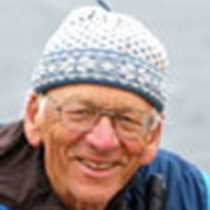Isla Coiba National Park & Marine Protected Area
Awaking in calm seas after a rather tumultuous night, the large island of Coiba stretched in both directions ahead of the ship. The skies were partly cloudy with some scattered showers over the main island. Even so, the weather for the day looked promising for our planned activities.
Coiba is not only interesting for its exquisite land and marine habitats, but for having been a prison colony as well. Hardened criminals were deposited on the island to serve out their terms far away from the rest of Panama. No one else was allowed on the islands or to come close to its shores. Prisoners worked on small plots of land growing food supplies. Then in 1991 the Panamanian government created a huge national reserve to protect the forests and the surrounding marine environment, as there was continued pressure from local commercial fisherman. Gradually the remaining prisoners were removed from the island. A few years ago the protected area was given international recognition and designated a World Heritage Site. Also, through efforts of a non-profit group called MarViva the surrounding 4 countries (Costa Rica, Panama, Colombia and Ecuador) create make up a vast area of the Eastern Tropical Pacific that is a Marine Protected Area. The future of Coiba and the Eastern Tropical Pacific is in the hands of those interested in its scientific value and natural attractions. Travelers, such as those of us on the National Geographic Sea Lion, can enjoy Coiba and appreciate its value to the world ecologically, as a result of its previously dubious existence.
Our morning focus was on experiencing the marine life of a small islet named Granito de Oro. This small “Gilligan’s Island” has a very nice rocky reef around part of the island, where a diversity of fish can easily be seen by simply floating around with a mask and snorkel. Reef fish with affinities to the Caribbean, the Gulf of California, Galápagos and other Pacific regions all gather around the reefs of Coiba. Two of the most exciting sites of the morning were a few white tip reef sharks lulling on the bottom and scattered hawksbill sea turtles poking for food amongst the coral covered rocks. Through the morning people went out to snorkel, came back to rest, and then went back out for more snorkeling or kayaking around the island, others preferred sitting in chairs on the beach soaking up the scenery and the sunshine.
By mid-day the crew had transported lunch to the park ranger station, where there were tables and chairs so we could comfortably enjoy our mid-day meal. A group of kayakers had worked up a large appetite by kayaking the 3 miles from Granito de Oro to the ranger station. Following lunch there was more lounging on the beach, snorkeling and kayaking. As we sailed away from Coiba, we learned more about sea turtles from Naturalist Rafa Robles. Recap followed with additional information about Coiba and our views of the marine creatures of Coiba.




